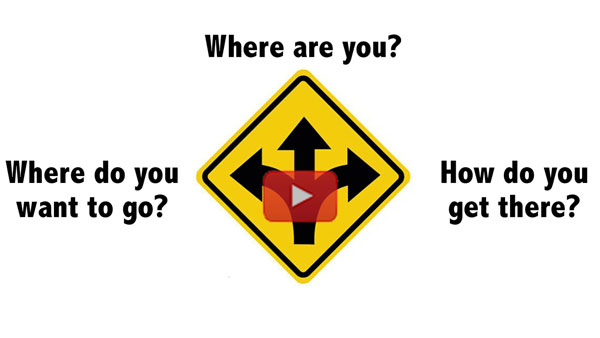IDEA & IEPs
Overview of the Transition Planning Process
PACER advocate Carolyn Anderson discusses the concept of “transition in the IEP" and the secondary transition planning process for a student with a disability on an IEP. She highlights that this time of discovery is based on the student's strengths, interests, and long-range goals for life after high school.
From the time your child begins receiving special education services, an Individualized Education Program (IEP) guides his or her education. During the transition years, your son or daughter's IEP must contain specific transition services defined by the Individuals with Disabilities Education Improvement Act of 2004 (IDEA) and its regulations. IDEA requires that by age 16 the IEP team must determine what instruction and educational experiences will help students prepare for the transition from school to adult life. IDEA requires that parents and students be involved in all aspects of transition planning and decision-making.
![]() Preparing for Employment: On the Home Front
Preparing for Employment: On the Home Front
This Parent Brief describes ways in which youth and families can help youth effectively explore work-based learning outside of school settings.
Transition planning generally involves three major activities:
- Coaching students and family members to think about goals for life after high school and to develop a long range plan to get there;
- Designing a high school education that ensures students will gain the skills and competencies needed to achieve their desired goals; and
- Identifying needed post-school services and supports, and linking students and families with them before they leave the special education system.
Teachers and families support students in identifying post-school goals and the steps needed to achieve their goals through ongoing discussion, assessment, instruction and work-based experiences.
Successful transition planning and implementation is student focused. School activities identified in a student's transition plan must be directly linked to each student's post-school goals. A transition plan must reflect a student's individual choices, preferences, and needs in the areas of education and training, employment, adult living arrangements, and community experiences. Self-determination and advocacy are critical skills that help ensure student-focused planning and implementation. Students can practice applying these skills by taking increasing responsibility for planning and conducting their IEP meetings.
PACER Resources
- Chart Your Own Future: How Your Individualized Education Program (IEP) Can Help
- College and Career Ready Standards and Individualized Education Programs: Information for Parents
- College and Career Ready Standards and Students with Disabilities: What Parents Need to Know
- Documents to Keep for Youth Transitioning to Adult Life
- Extracurricular Activities and Students with Disabilities
- Getting Started: Reading with Audiobooks and Text-to-Speech
- Help your Young Adult Learn about Accessing Accommodations after High School
- The IEP and Bullying
- Making the Move to High School: Tips for Parents of Students With Developmental or Intellectual Disabilities
- Notifying the School about a Bullying Incident
- Parent Tips for Transition Planning
- Preparation is key to gaining accommodations on ACT college entrance test
- Prepare Your Child for Age of Majority and Transfer of Rights
- Set an Employment Destination and Map a Course to Get There
- Start Now to Chart your Youth’s Career Path after Graduation
- Ten tips that may help ease your child's transition to adulthood
- Tips to Maximize the Parent Role in Transition
- Transition: Charting a Course for the Future
- Transition Planning Tips for Linguistically and Culturally Diverse Youth with Disabilities
- Transition to Adulthood: Where Do We Start
- Your IEP Meeting: A Great Place to Practice Self Advocacy Skills
- What if My Child is Not Capable of Representing Him or Herself? Guardianship May Be Needed
Other Online Resources on Transition Planning
- Transition to Adulthood
This resource page on the Parent Center Hub website provides an overview of the transition planning process and links to other great resources. Also available in Spanish. - The Role of Parents in Dropout Prevention: Strategies that Promote Graduation and School Achievement (2006)
- Universal Design for Learning and the Transition to a More Challenging Academic Curriculum: Making it in Middle School and Beyond (2005)
- Is your child too old to get an IEP?
- Dude Where’s my Transition Plan
Speaking directly to youth with disabilities, this 28-page booklet comes from STEP, the federally funded Parent Training and Information center in Tennessee. In addition to multiple transition planning worksheets, the booklet also includes several checklists and discussions of self-advocacy.
Spanish version - Transition Assessment and Goal Generator
This new on-line transition assessment from the University of Oklahoma’s Zarrow Center identifies students’ strengths and needs and can produce corresponding annual transition goals referenced to common core standards. Secondary-aged students with mild to moderate disabilities who plan to attend postsecondary education and/or become competitively employed, their parents or guardians, and related special education professionals are the intended users. Cost is $3. - Map It: What Comes Next?
Map It is a free, online, interactive training designed for transition-aged students who are deaf or hard of hearing. The training features peer role models to assist in development of self-determination and explain how to develop informed transition plans. - Understanding the Role of Individualized Learning Plans in Transition Planning for Youth with Disabilities
This InfoBrief from the National Collaborative on Workforce and Development for Youth (NCWD/Youth) explains how schools and families can supplement the required Individualized Education Program (IEP) by using an optional Individualized Learning Plan (ILP) as a tool to help youth successfully transition from high school to employment and postsecondary education. - Transition: Summary of Performance
An overview of the Summary of Performance (SOP) from Wrightslaw.



